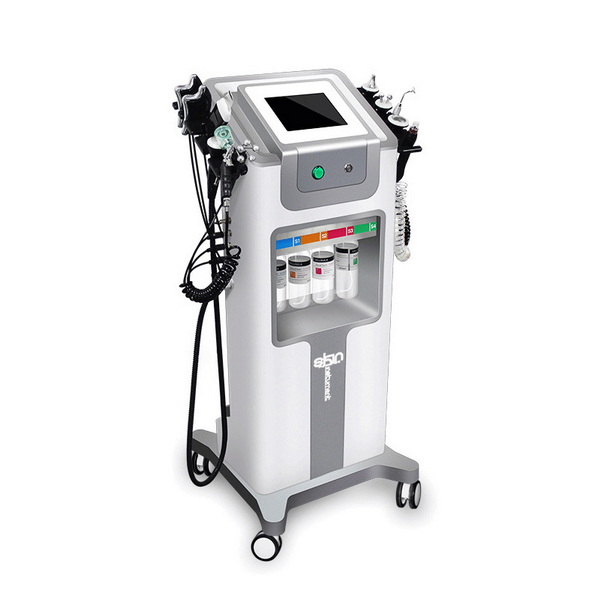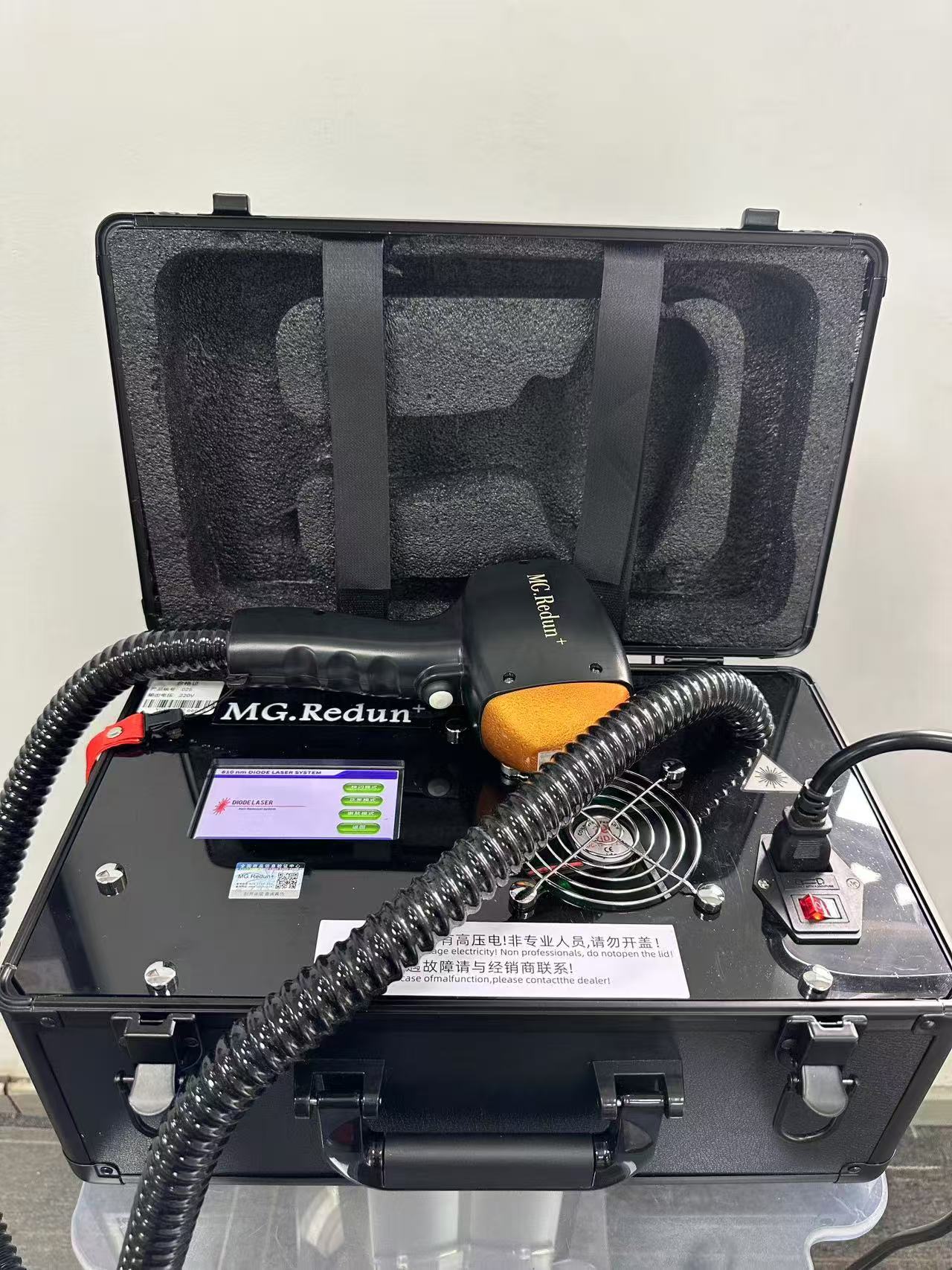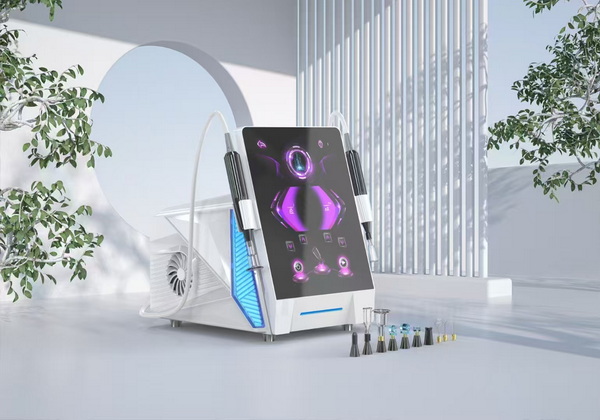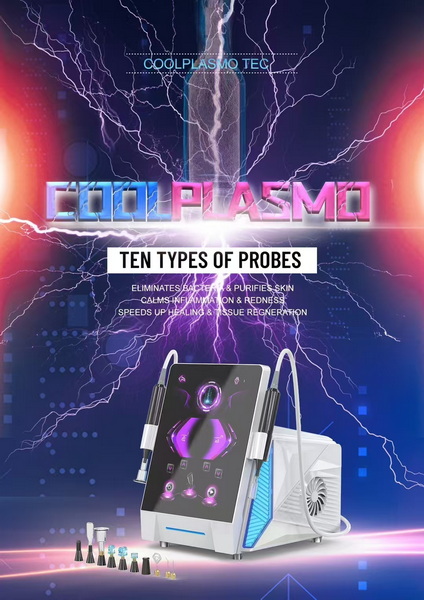The Woods Lamp, also known as a black light or ultraviolet light, is a valuable diagnostic tool commonly used in dermatology and skin care to examine skin conditions. This specialized device emits long-wave ultraviolet light (UV-A), which helps professionals analyze various skin issues that are not visible to the naked eye. From detecting fungal infections to identifying pigmentation disorders, the Woods Lamp plays an essential role in modern dermatological and aesthetic practices.
What is a Woods Lamp?
The Woods Lamp is a handheld device that emits UV-A light, often used by dermatologists, estheticians, and skincare professionals. This type of light highlights abnormalities in the skin by causing certain substances within the skin, such as melanin, bacteria, and fungi, to fluoresce or glow. The different colors and patterns revealed by the light can help diagnose a variety of skin conditions. For example, bacterial infections can appear red or orange under the light, while fungal infections may fluoresce green or yellow.
How Does a Woods Lamp Work?
When the Woods Lamp is held a few centimeters from the skin, it illuminates the area with UV light. This light penetrates the skin’s surface and interacts with molecules, causing them to fluoresce in different colors depending on the skin’s condition. The colors that show up under the Woods Lamp provide essential clues that can be used to determine the presence of infections, pigmentation changes, or even certain types of skin cancer.
Different skin conditions have unique fluorescence patterns:
- Bacterial Infections: Appear red or orange.
- Fungal Infections: Show up as greenish-yellow or blue.
- Pigmentation Disorders: Areas of increased melanin may appear darker, while areas lacking melanin can appear lighter.
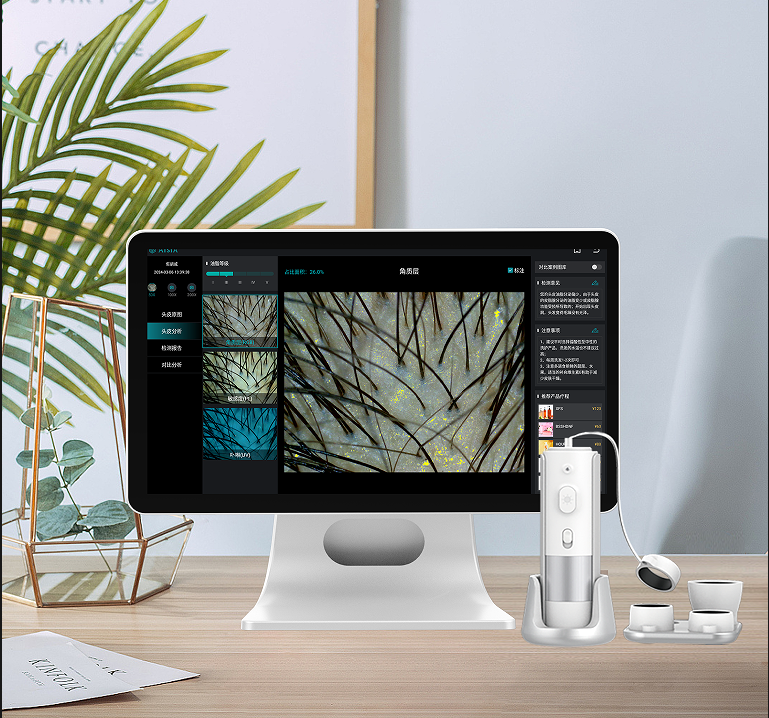
Common Uses of the Woods Lamp in Skin Diagnosis
The Woods Lamp is widely used in skin clinics, dermatology offices, and even beauty salons. Here are some of the most common uses of this device:
Diagnosing Fungal Infections
Fungal infections are often challenging to detect through visual inspection alone. The Woods Lamp simplifies this task by highlighting the affected area with a greenish fluorescence, making it easier to pinpoint the exact location of the infection. Common fungal conditions such as ringworm and tinea versicolor are frequently diagnosed using this tool.
Detecting Bacterial Infections
Certain types of bacteria, such as Corynebacterium minutissimum, which causes erythrasma, fluoresce red or orange under the Woods Lamp. This quick and non-invasive diagnostic method allows for more accurate treatment options.
Identifying Pigmentation Disorders
The Woods Lamp is effective in diagnosing conditions related to pigmentation changes, such as vitiligo and melasma. Areas affected by vitiligo, where melanin is lacking, will appear lighter, while regions with hyperpigmentation like melasma may show a darker hue under the light.
Detecting Skin Damage
Sun damage and other forms of skin aging can also be assessed using the Woods Lamp. By highlighting areas of damaged skin, professionals can advise patients on the best skincare treatments and preventative measures.
Woods Lamp in Aesthetic Treatments
While the Woods Lamp is a vital tool for diagnosing skin conditions, it also has applications in aesthetic treatments. Estheticians often use this device to evaluate the skin before performing treatments such as facials, chemical peels, or microdermabrasion. By understanding the skin’s underlying issues, they can tailor treatments for better results.
Acne Treatment
In the case of acne, the Woods Lamp can reveal the presence of bacteria or excess oil production that may not be visible otherwise. This information allows estheticians and dermatologists to recommend more targeted treatments, including medications and topical treatments.
Anti-Aging Treatments
For anti-aging procedures, the Woods Lamp helps detect underlying skin damage, which can then be addressed through treatments such as laser therapy, microneedling, or chemical peels. Clients often appreciate this deeper level of analysis, as it helps them understand the extent of their skin concerns and the benefits of recommended treatments.
How to Use a Woods Lamp Safely
While the Woods Lamp is generally considered safe for both patients and professionals, some precautions should be taken. Direct exposure to UV-A light should be minimized, and it is essential to avoid looking directly at the light. Patients may be asked to wear protective eyewear during the examination.
Additionally, while the Woods Lamp is highly effective in diagnosing various skin conditions, it should be used as part of a broader diagnostic approach. If an abnormality is detected under the Woods Lamp, further tests or biopsies may be required to confirm a diagnosis.
Maintenance and Care of a Woods Lamp
To ensure accurate diagnostics, it is essential to maintain the Woods Lamp properly. Regular cleaning of the lens and light source is crucial to remove any dust or residue that may affect the lamp’s performance. The bulb should also be replaced periodically to maintain the quality of the light output.
Proper Storage
When not in use, the Woods Lamp should be stored in a protective case to prevent damage. Exposure to moisture, excessive heat, or dust can reduce the lamp’s lifespan and accuracy.
Calibration
It is also a good idea to have the Woods Lamp calibrated by a professional regularly. This ensures that the UV-A light emitted remains within the correct spectrum, leading to consistent and reliable results.
Choosing the Right Woods Lamp for Your Practice
If you are considering purchasing a Woods Lamp for your dermatology practice, spa, or beauty clinic, there are several factors to keep in mind. The following are some key considerations when selecting a Woods Lamp:
Portability
Many modern Woods Lamps are designed to be compact and lightweight, making them easy to transport between treatment rooms or even between different locations.
UV Light Intensity
The intensity of the UV light can vary between models. Some lamps allow for adjustable light intensity, which can be beneficial when diagnosing more subtle conditions.
Battery Life
For mobile practitioners, battery life is an important feature to consider. A rechargeable Woods Lamp with a long battery life ensures you can perform multiple examinations without needing to recharge frequently.
Conclusion
The Woods Lamp is an indispensable tool in dermatology and skin care, providing critical insights into various skin conditions that are not visible to the naked eye. From diagnosing infections to identifying pigmentation disorders, this device enhances both clinical and aesthetic treatments, offering precise and tailored solutions for patients. Whether used in a medical setting or a beauty clinic, the Woods Lamp remains an essential device for professionals committed to improving skin health and appearance.



